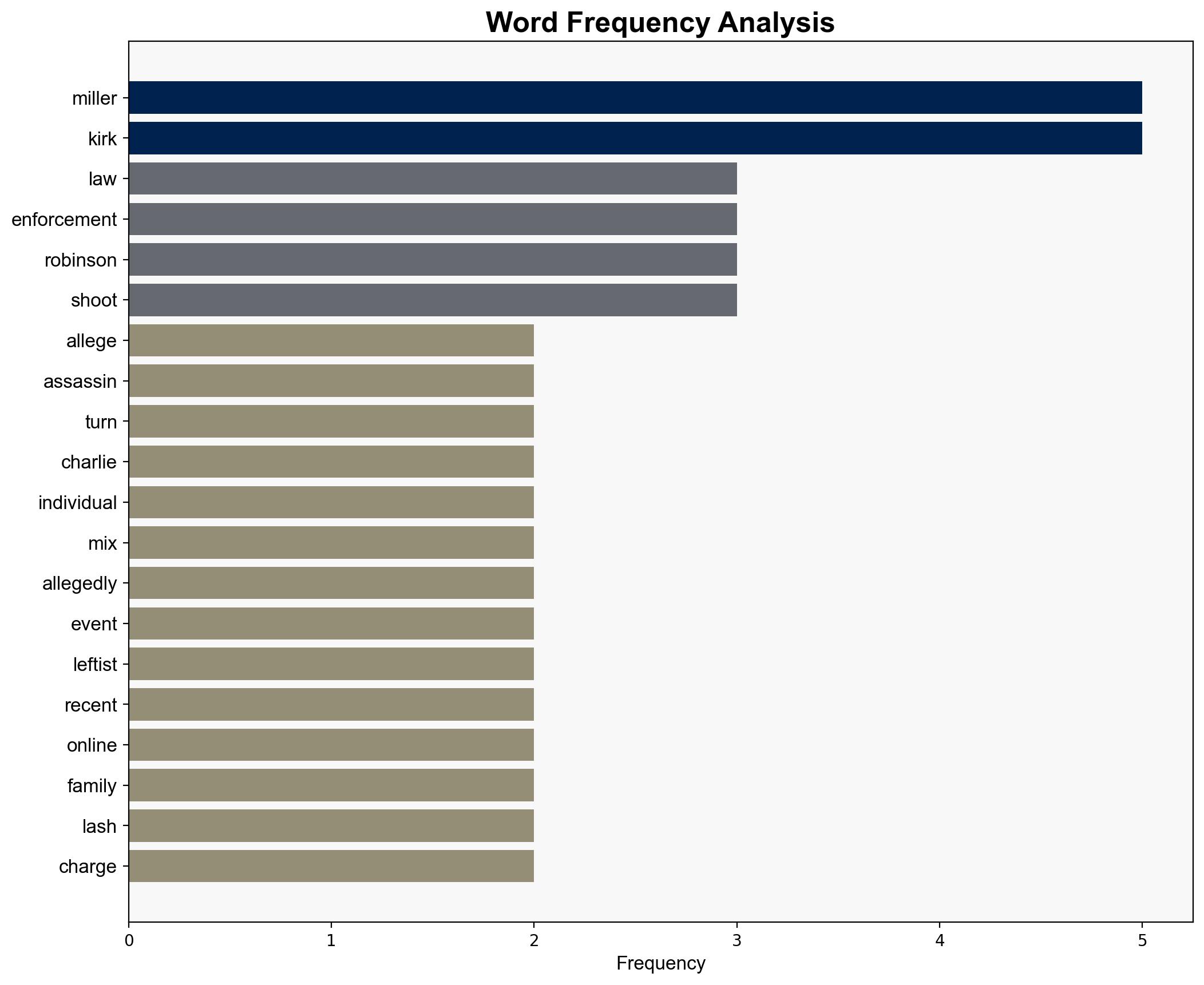CNNs John Miller Says Alleged Charlie Kirk Assassin Picked Grievances From A Salad Bar Of Extremism – The Daily Caller
Published on: 2025-09-13
Intelligence Report: CNNs John Miller Says Alleged Charlie Kirk Assassin Picked Grievances From A Salad Bar Of Extremism – The Daily Caller
1. BLUF (Bottom Line Up Front)
The most supported hypothesis is that Tyler Robinson’s actions were driven by a personal amalgamation of extremist ideologies, reflecting a broader trend of radicalization through online platforms. Confidence in this assessment is moderate due to the complexity and variability of individual radicalization pathways. It is recommended to enhance monitoring of online extremist content and improve intervention strategies for individuals showing signs of radicalization.
2. Competing Hypotheses
1. **Hypothesis A**: Tyler Robinson was primarily motivated by a specific extremist ideology, which he adopted fully, leading to the assassination attempt.
2. **Hypothesis B**: Robinson’s actions were the result of a personal, incoherent blend of grievances and extremist ideologies, lacking a clear ideological throughline.
Using the Analysis of Competing Hypotheses (ACH) 2.0, Hypothesis B is better supported. The evidence suggests that Robinson’s motivations were a mix of various extremist ideologies, as indicated by the disparate nature of the bullet casing inscriptions and his online activity.
3. Key Assumptions and Red Flags
– **Assumptions**: It is assumed that Robinson’s online activities and communications reflect his true motivations. There is an assumption that the inscriptions on the bullet casings are indicative of his ideological leanings.
– **Red Flags**: The lack of a clear ideological manifesto or statement from Robinson raises questions about the coherence of his motivations. The potential influence of mental health issues is not addressed, which could be a significant factor.
4. Implications and Strategic Risks
The incident highlights the risk of individuals becoming radicalized through fragmented online content. This poses a threat to national security as it complicates the identification and prevention of lone-wolf attacks. The celebration of such acts by military personnel online suggests potential insider threats and the need for enhanced monitoring and disciplinary measures within the armed forces.
5. Recommendations and Outlook
- Enhance online monitoring tools to detect and analyze extremist content and its influence on individuals.
- Implement targeted intervention programs for individuals showing signs of radicalization.
- Strengthen disciplinary protocols within military and law enforcement agencies to address and deter extremist sympathies.
- Scenario Projections:
- Best Case: Improved monitoring and intervention reduce the incidence of lone-wolf attacks.
- Worst Case: Failure to address online radicalization leads to an increase in ideologically motivated violence.
- Most Likely: Continued sporadic lone-wolf attacks with varying ideological motivations.
6. Key Individuals and Entities
– Tyler Robinson
– Charlie Kirk
– John Miller
– Pete Hegseth
7. Thematic Tags
national security threats, cybersecurity, counter-terrorism, regional focus




